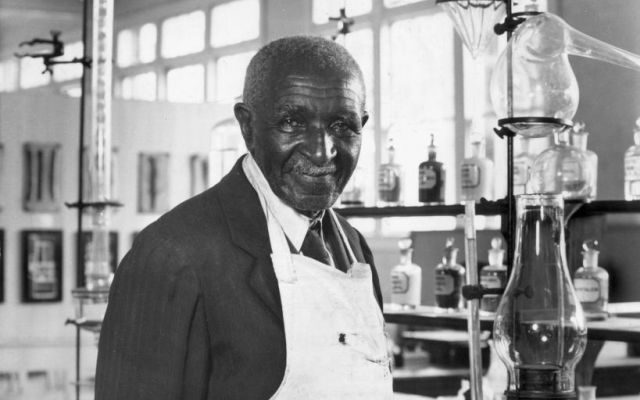George Washington Carver is a name synonymous with ingenuity, agricultural science, and a commitment to bettering society. However, many are unaware of his patents and innovationss profound influenve on industry and invention. This blog dives deep into Carver’s early life, motivations, groundbreaking patents, and continued relevance today—a must-read for history buffs, inventors, students, and anyone fascinated by intellectual property.
The Legacy of George Washington Carver
George Washington Carver’s name often evokes images of peanut-based inventions. While his work with peanuts was revolutionary, Carver’s impact extends far beyond one crop. Born enslaved during the Civil War, Carver defied immense odds to become one of history’s most influential inventors and agricultural scientists. His commitment to sustainable farming, education, and resourcefulness transformed agriculture and inspired generations of inventors.
Carver pioneered intellectual curiosity and practical application, earning nicknames like “The Plant Doctor” and “The Wizard of Tuskegee University.” His work was a testament to the potential of human innovation when paired with determination and community-focused ideals.
Early Life and Education
George Washington Carver’s early life was defined by both hardship and resilience. Born into slavery around 1864 in Diamond, Missouri, Carver faced significant challenges from the start. Orphaned as an infant, Moses and Susan Carver raised him, his enslavers turned guardians, who encouraged his education despite the prevalent societal barriers of the time. Due to limited local opportunities for Black children to attend school, Carver walked miles daily to educate himself and embraced an insatiable thirst for knowledge. His natural curiosity about plants and the environment was evident from a young age, earning him a reputation as the “peanut man” and a self-taught “plant doctor” among his neighbors.
Carver’s dedication to learning eventually led him to higher education. After being denied admission to Highland University due to his race, he was accepted at Simpson College in Iowa, where he initially pursued art. His professors recognized his exceptional talent in scientific subjects and encouraged him to switch his focus to agricultural studies. This decision led Carver to transfer to Iowa Agricultural College (now Iowa State University), where he became the institution’s first Black student and later its first Black faculty member. Carver’s groundbreaking research and dedication to improving agricultural practices gained widespread recognition.
His achievements caught the attention of Booker T. Washington, the president of Tuskegee Institute. Washington invited Carver to join the Tuskegee Institute in Alabama in 1896, a pivotal moment in Carver\’s career. At Tuskegee, Carver devoted over four decades to teaching, researching, and revolutionizing sustainable agricultural practices. His work there became the foundation for many of the advancements in farming and resource management that continue to impact agriculture today.

Later Life and Death
George Washington Carver’s later years were marked by his dedication to sharing his knowledge and promoting sustainable agriculture. At Tuskegee Institute, he continued developing innovations that benefited poor farmers, particularly in the rural South. His efforts focused on crop rotation, soil preservation, and the development of alternative crops such as peanuts, sweet potatoes, and pecans, which helped rejuvenate depleted soils while providing farmers with new economic opportunities.
Though widely regarded as humble, Carver gained national and international recognition for his work. He advised prominent figures such as President Theodore Roosevelt and Mahatma Gandhi, and his contributions earned him numerous accolades, including the Spingarn Medal from the NAACP in 1923. Carver famously declined lucrative job offers from wealthy industrialists, choosing instead to dedicate his life to helping others and advancing education.
Carver died on January 5, 1943, at the Tuskegee Institute in Alabama. His enduring legacy is reflected in the countless farmers and scientists he inspired, and the George Washington Carver National Monument in Diamond, Missouri—the first national monument dedicated to an African-American. Carver’s tireless efforts to improve agriculture, education, and resource management continue to resonate, solidifying his place as one of history’s most influential figures.
What Drove Carver to Invent?
Carver’s drive to invent stemmed from his desire to help impoverished farmers, especially African Americans in the South, achieve economic independence. The agricultural industry of his time struggled due to over-reliance on cotton, which depleted soil nutrients and caused widespread poverty. Carver saw an opportunity to introduce sustainable farming practices and alternative crops like peanuts, sweet potatoes, and soybeans.
Rather than creating for personal profit, Carver’s inventions were often intended for educational and community empowerment. He famously declined offers to commercialize some of his discoveries, opting to share his knowledge freely. His approach was deeply rooted in the belief that invention should serve society.

Exploring Carver’s Patents
Despite being credited with countless innovations, George Washington Carver obtained only three patents during his lifetime. These patents, all granted between 1925 and 1927, highlight his commitment to practical and sustainable solutions:
1. Patent No. 1,522,176 (Cosmetics and Paints from Peanuts)
This patent describes a process for creating various products from peanuts, including cosmetics and paints. At a time when farmers were seeking alternative crops to cotton, Carver’s work demonstrated how peanuts could be transformed into versatile, value-added products. His method provided farmers with new sources of income and showcased the resourcefulness of natural materials.
2. Patent No. 1,541,478 (Process of Producing a Rubber Substitute from Sweet Potatoes)
One of Carver’s most innovative patents, this invention detailed a process for producing a rubber-like substance from sweet potatoes. During a period of high demand for rubber and synthetic alternatives, Carver’s research was both timely and groundbreaking. It demonstrated the potential of underutilized crops to solve industrial challenges.
3. Patent No. 1,632,365 (Process of Producing Paints and Stains)
This patent outlined a method of producing paints and stains using agricultural waste materials. Carver’s invention provided an eco-friendly solution by repurposing agricultural byproducts for industrial use. It was yet another example of his commitment to sustainability and efficiency.
Carver’s patents remind us that significant innovation doesn’t always require complexity—it requires creativity, resourcefulness, and a deep understanding of the problems at hand.
Carver’s Impact on Agriculture and Industry
Carver’s contributions transformed agriculture in the American South. He helped farmers restore depleted lands and establish more sustainable practices by advocating for crop rotation and soil enrichment. His promotion of alternative crops like peanuts and sweet potatoes diversified farming and created new economic opportunities.
George Washington Carver’s legacy has been preserved through numerous museums, monuments, and foundations that honor his remarkable contributions:
- George Washington Carver National Monument
Located in Diamond, Missouri, this site marks Carver’s birthplace. Established in 1943, it was the first national monument dedicated to an African American. It highlights his life, scientific achievements, and philosophies through exhibits, a discovery center, and nature trails.
- The George Washington Carver Museum (Tuskegee, Alabama)
Situated on the campus of Tuskegee University, this museum showcases Carver’s work and his influence on science, agriculture, and education. It contains a vast collection of his personal artifacts, lab equipment, and detailed displays of his innovations. The National Park Service currently maintains this museum.
- The George Washington Carver Museum and Cultural Center (Austin, Texas)
This cultural center celebrates Carver’s legacy while also serving as a hub for African American history and artistic expression. The museum encourages community engagement and learning with numerous exhibits and cultural programs.
- George Washington Carver Foundation
Founded at Tuskegee University, the foundation continues Carver’s agricultural research and educational mission. It supports the preservation of his work and provides scholarships for students pursuing studies in science and agriculture.
These institutions ensure that Carver’s transformative work and enduring influence are celebrated and accessible to future generations. They serve as educational resources and tributes to a man who dedicated his life to innovation and service.
- The George Washington Carver Garden
The George Washington Carver Garden, located at the Missouri Botanical Garden in St. Louis, pays tribute to Carver’s lasting legacy in agriculture and environmental sustainability. This serene garden is designed to reflect the values Carver cherished, including conservation, education, and the beauty of nature.

Why Carver’s Work Still Matters Today
Carver’s influence extends far beyond his patents. He is a symbol of resilience, ingenuity, and the enduring impact of invention. His emphasis on education and community upliftment continues to serve as a model for socially responsible innovation.
For inventors and entrepreneurs today, Carver’s story provides valuable lessons:
- Solve Real Problems: Focus on creating solutions that address societal needs.
- Leverage Available Resources: Carver’s work with agricultural byproducts demonstrates the power of resourcefulness.
- Protect Your Innovations: While Carver was generous with his knowledge, his patents ensured that his methods were documented and accessible for future generations.
For those navigating the world of intellectual property (IP), Carver’s legacy underscores the importance of protecting your ideas through patents. Whether you’re an aspiring inventor or an established entrepreneur, working with a knowledgeable patent attorney is crucial to securing your rights and maximizing the impact of your innovations.
Carrying Forward the Legacy of Innovation
George Washington Carver’s life and work remind us that invention is not just about individual success—it’s about leaving a positive, lasting mark on the world. His contributions to agriculture, industry, and education remain a testament to the power of imagination and determination.
If you’re an aspiring inventor ready to make your mark, now is the time to get started. Securing your intellectual property is the first step in bringing your ideas to life and protecting them for the future. Connect with our team of experienced patent attorneys today and take the next step toward making your vision a reality.
Looking to Patent an Invention?
Please contact Arlen Olsen at Schmeiser, Olsen & Watts LLP at aolsen@iplawusa.com.
About the Author

Mr. Olsen, a former adjunct professor of intellectual property law, has over 25 years of experience in all aspects of intellectual property law. Mr. Olsen is a founding Partner of Schmeiser, Olsen & Watts LLP and a former United States Patent Examiner. Mr. Olsen has prosecuted numerous patents that have been litigated and received damages of over 60 million dollars. Additional activities include teaching seminars, appearing as a guest lecturer on intellectual property matters for corporations and educational institutions, and evaluating and consulting with clients regarding the scope, enforcement, and protection of intellectual property rights.



